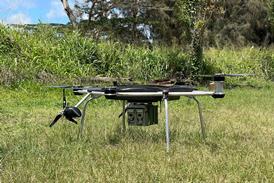Most of Latin America remains a bright spot in an otherwise gloomy world, with several of the region's major carriers expecting to again be in the black this year.
Carriers from Latin America and the Caribbean which made the Airline Business top 150 posted a $1.3 billion operating profit in 2008, roughly matching their stellar 2007 performance, as revenues surged by almost a quarterrunning to $23 billion. Three carriers ended the year with double-digit operating margins - Avianca, Copa and LAN - putting them in the illustrious top 15 for highest group operating margins.
Most Latin American markets continue to be strong this year. Demand for flights in the region is particularly strong, offsetting a lower take-up to Europe and the USA. Perennially profitable Copa and LAN, which in recent years have outperformed nearly every other airline traded on the New York Stock Exchange, remain optimistic that 2009 will be another stellar year.
Copa led all Americascarriers in the Airline Business top 150 with a 17% operating margin in 2008. Copa chief executive Pedro Heilbron credits the performance to strong intra-Latin America traffic. "Last year was probably the strongest for overall traffic growth in Latin America. The economies were growing very strongly and the currencies were very strong versus the US dollar, which made travel relatively inexpensive." Heilbron adds most Latin American economies have remainedhealthy, including Panama which is expected to grow another 3%. In May Copa reported its first monthly traffic drop in several years, but Heilbron believes this was an aberration due to swine flu and Copa has not yet had to adjust its 2009 profit forecast. Heilbron says: "Things are starting to look better rather than worse."
LAN chief executive Enrique Cueto acknowledges LAN's cargo business, which makes up about 25% of its revenues, is down 20% this year due to the crisis. But he adds LAN's intra-Latin America passenger business and its domestic passenger operations in Argentina, Chile, Ecuador and Peru are growing. Peru's economy is particularly vibrant."The reduction in cargo traffic is huge. Last year was a record for cargo and this year is probably the worst ever," Cueto says. "But this year domestic and regional intra-Latin America is very strong. Last year long-haul passenger was tough because of fuel prices but now it's better. We have a very good mix."
In Brazil, the region's single largest market, profitability could also improve this year despite intensifying competition and falling domestic load factors. Brazil's two major carriers both incurred net losses in 2008.Gol underwent a drastic restructuring, axing its long-haul operations, and TAM was hit by fuel hedge and currency exchange losses. This year Brazil's economy is slower and competition is tougher, but Gol and TAM are back in the black. "Even with a lower load factor we've been able to achieve profitability - a 24% EBITDA margin for example in the first quarter of this year," says Gol chief executive Constantino de Oliveira Junior.
Oliveira is confident that capacity being added by Azul and TRIP will not impact Gol's profits: "Competition will stimulate demand. You have to manage your revenue in an intelligent way. Also we're working with business travellers where they are less price-sensitive and this is helping us build strong revenues."
The only real weak spot in Latin America is Mexico. Most Mexican carriers were highly unprofitable last year due to domesticovercapacity and a weak economy which is much more dependent on the USA than any other Latin economy.
"The Mexican market was the most challenging last year. This year the flu hasn't helped," says Alex de Gunten, executive director of Latin American and Caribbean airline association ALTA. "The government has allowed more competition and Mexico is more tied to the US. You put it all together and there is a big effect."De Gunten says the outlook for the rest of Latin America is relatively positive. He says yields may be dropping but costs have followed suit as a result of the lower fuel prices.
In the Caribbean, however, airlines are expected to generally remain unprofitable as consolidation remains elusive. "The Caribbean is a slightly different issue because most airlines are government-owned," de Gunten says. "Many airlines in the Caribbean have a social role. The focus is different. They want to be efficient and profitable but there is social pressure to operate to certain destinations that may not be profitable."While Caribbean Airlines has successfully restructured, most of the region's carriers remain inefficient. Air Jamaica is now trying to restructure and privatise but a positive outcome is far from certain. "They are cutting their aircraft and fleet but there's still a lot of pressure from the government," says de Gunten.
Source: Airline Business
















